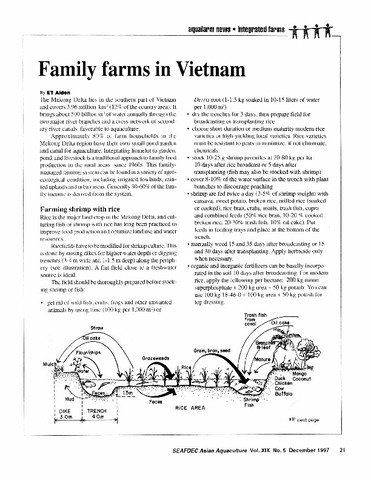Farming the seaweed Kappaphycus
| dc.contributor.author | Hurtado, Anicia | |
| dc.date.accessioned | 2013-09-07T15:45:13Z | |
| dc.date.available | 2013-09-07T15:45:13Z | |
| dc.date.issued | 2003 | |
| dc.identifier.citation | Hurtado, A. (2003). Farming the seaweed Kappaphycus. SEAFDEC Asian Aquaculture, 25(3), 23. | en |
| dc.identifier.issn | 0115-4974 | |
| dc.identifier.uri | http://hdl.handle.net/10862/1623 | |
| dc.description.abstract | Seaweed farming is the top foreign exchange earner for the Philippines. Kappaphycus constitutes 80% of the Philippine seaweed export. It is sold in both fresh and dried forms; although dried seaweed has a greater demand, fresh seaweed is highly prices in restaurants. The 3 main seaweed products marketed are agar, alginate and carrageenan. A brief outline is given of farming operations and investment costs and returns. | en |
| dc.language.iso | en | en |
| dc.publisher | Aquaculture Department, Southeast Asian Fisheries Development Center | en |
| dc.subject | Philippines | en |
| dc.title | Farming the seaweed Kappaphycus | en |
| dc.type | magazineArticle | en |
| dc.citation.volume | 25 | |
| dc.citation.issue | 3 | |
| dc.citation.spage | 23 | |
| dc.citation.journalTitle | SEAFDEC Asian Aquaculture | en |
| dc.subject.asfa | seaweed culture | en |
| dc.subject.asfa | aquaculture systems | en |
| dc.subject.asfa | aquaculture products | en |
| dc.subject.asfa | aquaculture economics | en |
| dc.subject.scientificName | Kappaphycus | en |





